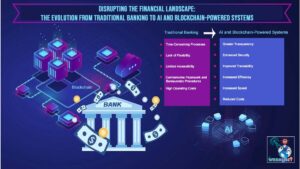In the contemporary era of digital transformation, the incorporation of Artificial Intelligence (AI) into various aspects of our daily routine has introduced a plethora of innovations and practical utilities. From AI-powered personal assistants to sophisticated online web applications, the benefits are clear. Still, these technological advancements bring new obstacles, especially in the cybersecurity field. The emergence of AI-driven cyber threats poses significant risks to individuals and organizations alike. In this blog, we will discuss the growing concerns around AI cyber threats and how they are reshaping the cybersecurity landscape.
The Rise of AI-Powered Cyber Threats
As AI technology continues to develop, cybercriminals are taking advantage of its capabilities to develop more sophisticated and targeted attacks. Traditional methods of dealing with malware and phishing attacks are becoming increasingly ineffective against these AI-powered threats. Cyber security experts are now in a race to develop advanced solutions capable of detecting and mitigating these emerging risks.
AI in Malware Development
One of the most dangerous trends is the use of AI in the development of malware. AI algorithms can analyze large amounts of data to identify vulnerabilities in systems and create tailored malware that exploits them. This level of customization makes these AI-powered malware strains particularly elusive and challenging to detect using traditional antivirus software.
AI-Enhanced Phishing Attacks
Phishing attacks have long been a favorite tactic among cybercriminals, but AI is taking these attacks to new heights. By analyzing a target’s online behavior and communication patterns, AI algorithms can produce highly convincing phishing emails that are nearly indistinguishable from legitimate communications. This makes it easier for cyber criminals to trick individuals into revealing sensitive information or downloading malicious attachments.
Targeting Online Web Applications and Payment Gateways
Online web applications and payment gateways are prime targets for AI cyber threats due to the sensitive data they handle. AI-powered attacks can exploit vulnerabilities in these systems to steal payment information, personal data, and other valuable assets. As more businesses shift to digital platforms, the risks posed by these AI-powered attacks are expected to increase, making strong cybersecurity measures more important than ever.
Banking on Vulnerabilities
The banking sector is another industry that is significantly affected by AI cyber threats. With the rise of online banking and digital transactions, banks are facing an increasing number of sophisticated attacks aimed at compromising customer accounts and financial data. AI-powered attacks can bypass traditional security measures and authentication protocols, posing a significant risk to both financial institutions and their customers.
Targeting Desktop Machines and Mobile Devices
No device, including desktop machines and mobile devices, is safe from AI cyber threats. Cyber criminals are using AI to develop malware that can infect a wide variety of devices, from personal computers to smartphones and tablets. Once infected, these devices can be used to launch further attacks, steal data, or even become part of a larger botnet controlled by malicious actors.
The Role of Robot Machines in Cyber Threats
The integration of AI into robotic machines presents a unique set of challenges in terms of cybersecurity. Robot machines are becoming increasingly autonomous and interconnected, making them potential targets for AI-powered attacks. A compromised robotic machine can pose physical risks in addition to cybersecurity threats, highlighting the need for comprehensive security measures that consider both digital and physical vulnerabilities.
The Need for Advanced Cyber security Solutions
Given the evolving nature of AI cyber threats, traditional cybersecurity solutions are no longer sufficient. Organizations need to invest in advanced AI-powered security tools that are able to detect and respond to these sophisticated attacks in real time. This includes employing AI-powered threat intelligence platforms, machine learning algorithms and automated response systems to stay one step ahead of cyber criminals.
Educating the Public on AI Cyber Threats
Public awareness and education are critical to effectively combat AI cyber threats. Individuals should be informed about the risks associated with AI-powered attacks and the steps they can take to protect themselves online. This includes practicing good cybersecurity hygiene, using strong, unique passwords, and being alert to phishing attempts and suspicious activities.
Collaborative Efforts to Counter AI Cyber Threats
Tackling the challenges posed by AI cyber threats requires a collaborative effort of governments, cybersecurity experts, and technology companies. By sharing information, resources, and expertise, we can develop comprehensive strategies to reduce the risks associated with AI-powered attacks and create a safer digital environment for all.
Future Outlook
The emergence of AI cyber threats is a serious issue that demands immediate attention and action. As AI technology continues to advance, so do the capabilities of cyber criminals, making it imperative for individuals, organizations, and governments to remain vigilant and proactive in their approach to cybersecurity. By understanding the nature of these AI-powered attacks and implementing strong security measures, we can effectively protect our digital assets and maintain trust in the online ecosystem. Be alert, stay informed and stay safe.




